WHAT CAN WE SEE
IN SACROMONTE ABBEY?
The monument
After ascending the seven slopes at the end of Sacromonte’s road , we find ourselves facing a monumental site. Although the Abbey’s Architectural presence is that of a grand one-piece building, its construction is one of evolution and growth. So much so, that we can describe its chronological evolution not in layers but following an East to West growth pattern, where, first, we find the Sacred Caves and their Chapels, then, the Old College and, finally, the Baroque Church integrated within the Rectory building frontal façade. There is a Choir on the upper floor of the Church, with a Baroque structure and wood-carved stalls.

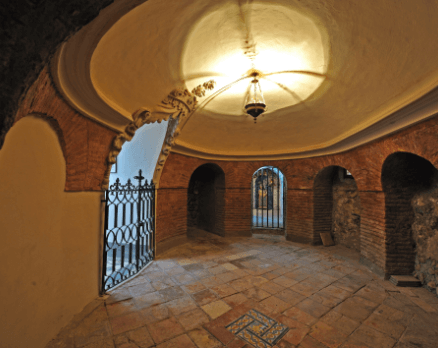
The Sacred Caves
Description: The great Christian work Sacromonte Abbey is today has its origin in the underground ovens where the relics of the Christian martyrs, St. Cecilius, first Archbishop of Granada, and his followers, St. Hiscius and St. Patricius, were found.
We enter a magical realm, full of spirituality and faith, that the visitor can feel walking through the sinuous dark narrow passages and the scattered small chapels with sun-lit domes which illuminate the place where these Saints were crowned martyrs.
The Collegiate Church
The Church, dedicated to the Assumption of the Virgin Mary, stands inside the Abbey’s monumental complex.
Walking along the Abbey we find a building divided in a roman-cross plant, with a wide monumental space open in three naves: a high central aisle and two lower lateral aisles. From the Main Chapel one can see the Choir on the upper half of the central nave, resembling the structure of bigger churches and Cathedrals.
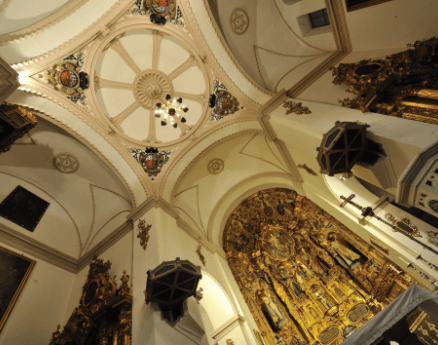
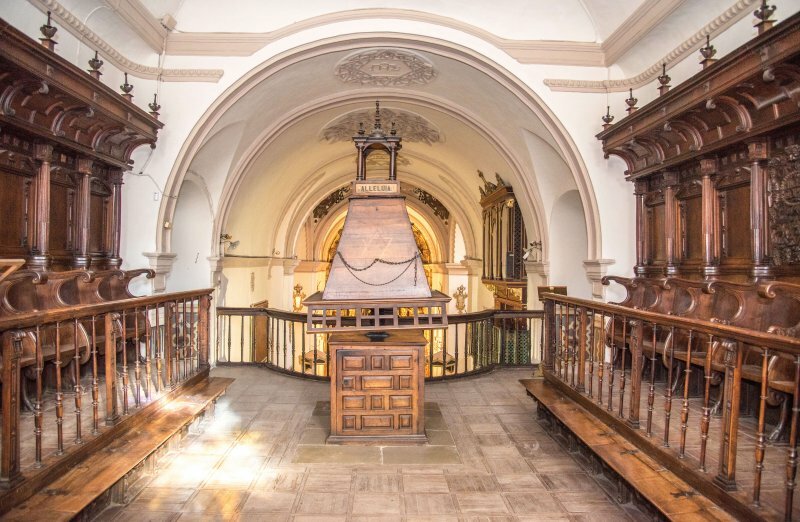
The Choir
Description: The Collegiate Church’s Choir is impressive. From the Main Chapel one can see the splendid wood-carved stalls and the great lectern where the Abbey’s extraordinary song books were placed.
On one side, hanging above the central nave, we find the still in use organ. We can recreate the time when the canons met to pray the hours and sing their songs. There is music especially composed for this particular Choir’s liturgy.
The Upper floor
The upper floor, in the building’s centre line, sustains the Abbey’s interior corridors. Although these spaces are not open to the general visit, it is where the Abbey is more alive, once full of students, and today still kept in use.


St. Dionysius Church
Description: This small church, at the back of the Rectory building, is built in a 19th century neo-gothic style and has been fully restored recently. St. Dionysius Church is one of the less known and most surprising constructions in the heritage site which Sacromonte Abbey is.
The Old College
We find ourselves facing the first private University in Granada. St. Dionysius College, or Old College, is the oldest construction in the Abbey. Pending of restoration, it is not open to the visitor who nevertheless crosses its small courtyard on the way from the Collegiate Church to the Holy Caves. It was first conceived as a School for the Canons and Priests, and developed into Colleges of Law, Philosophy, and Classical and Semitic Languages. In its last epoch, in the 20th century, it was a High School for gentlemen, and some old pupils still come to visit.

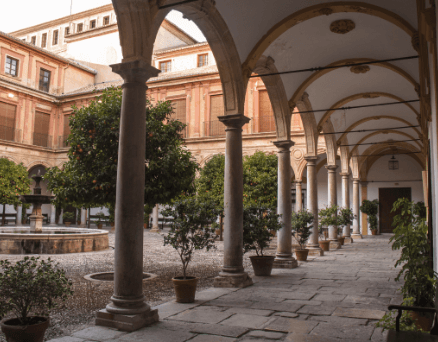
The Cloister
Description: The Abbey’s life stems from the Cloister, and reaches every place of prayer and recreation inside. The original design included a total of four cloisters, each with the dimensions of this only one which was finally constructed. It has become the great opening hall into the grandiosity of the building.
Art collection
Like a museum, the works of art and some elements in the Abbey’s great history are displayed in the four rooms that form the permanent exhibition venue today.
The first room displays copies of the “leaden books”. Their content and their link to the Abbey are described in text. The importance of these findings at the end of the 16th century, near the first Granada Christian Martyrs relics, is historically explained and interpreted: what they were, what they were meant to be, and what they are today.
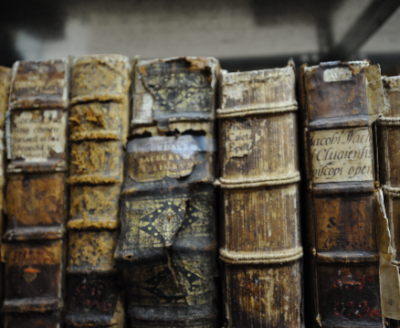
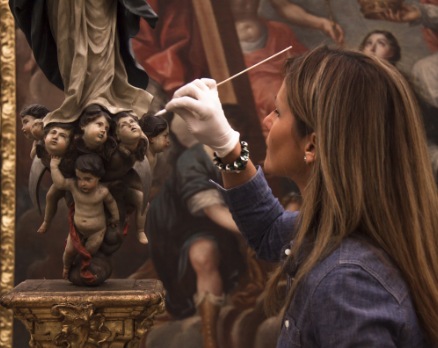
Restoration workshop
Description: Art lovers can also find inside the Abbey the restoration workshop which serves the artistic heritage of the church in the province of Granada.
A new addition to the Abbey’s life, Lourdes and Lola Blanca, in charge of the workshop, put all their loving in this very delicate task. With them the Abbey feels once again the murmurs of curiosity and learning moving in its corridors; because, it is devoted not only to the restoration of its own patrimony, but also open to additional commissions, which bring experts and exhibition curators to its premises.
Do already you know what you can see at Sacromonte Abbey when you visit it ?
Sacromonte Abbey is an emblematic place of Granada where history and culture are shown in the same sense.
If you travel to Granada and want to know her history, you can not miss the Sacromonte Abbey. You can buy tickets for any of the guided tours through the link.
[kkstarratings]

 English
English
